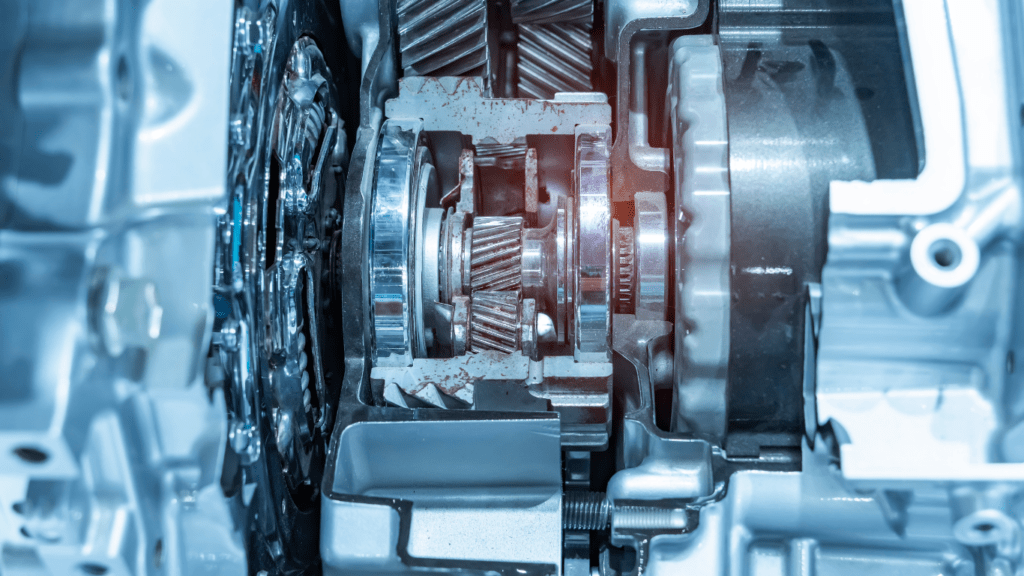Historical Evolution of Automation in the Automotive Industry
Early Mechanization and Assembly Lines
Automation in the automotive industry began in the early 20th century with the introduction of mechanized production techniques.
Henry Ford revolutionized car manufacturing in 1913 by implementing the moving assembly line at his Highland Park plant.
This innovation significantly reduced the time to build a Model T from 12 hours to just 93 minutes, showcasing the efficiency of early mechanization.
Assembly lines allowed for the specialization of labor, where workers performed specific tasks repetitively. Examples include installing the engine or attaching the wheels.
Despite the initial success, these assembly lines required substantial human input.
Mechanization at this stage improved productivity but relied heavily on manual labor.
Advancements from the 20th to 21st Century
By the mid-20th century, the automotive industry saw further advancements in automation.
The introduction of programmable logic controllers (PLCs) in the 1960s marked a significant shift.
- PLCs enabled the automation of machinery and processes, reducing the need for human intervention.
- This era also witnessed the birth of industrial robots, with General Motors deploying the Unimate robot in 1961 for spot welding.
- In the late 20th century, automotive manufacturers began adopting Computer-Aided Design (CAD) and Computer-Aided Manufacturing (CAM) technologies.
- These tools allowed for precision in design and production. Examples include the use of CAD for vehicle modeling and CAM for automated machining processes.
- Entering the 21st century, advancements in AI and machine learning further revolutionized the industry.
- Smart factories equipped with IoT devices emerged, enabling real-time monitoring and data-driven decision-making.
- Autonomous robots now handle complex tasks such as assembly, inspection, and logistics.
- Companies like Tesla use AI-driven automation to enhance production efficiency, improve quality control, and reduce operational costs.
- Automation in the automotive industry has come a long way, evolving from simple mechanization to intricate AI-driven processes.
These advancements continue to shape the future of manufacturing, aiming for greater efficiency and sustainability.
Current State of Automation in the Automotive Industry
Robotics in Production
Robotics play a crucial role in automotive production. Car manufacturers use industrial robots for tasks such as welding, painting, and assembly. Robots enhance efficiency and precision.
Automated welding robots, for example, ensure strong and consistent welds, reducing the likelihood of defects.
Painting robots apply coatings evenly, improving the vehicle’s finish and reducing waste.
In assembly, robots can handle repetitive tasks with high accuracy, freeing human workers for more complex operations.
AI and Machine Learning Integration
AI and machine learning are transforming automotive manufacturing.
These technologies enable predictive maintenance and quality control. By analyzing data from sensors, machines can predict failures before they happen, minimizing downtime.
I-driven quality control systems detect imperfections that human eyes might miss, ensuring higher product quality.
Additionally, AI models optimize supply chain logistics, improving inventory management and reducing costs.
In smart factories, AI algorithms automate scheduling and resource allocation, enhancing overall production efficiency.
Benefits of Automation for Automotive Manufacturers
Increased Production Efficiency
- Automation significantly boosts production efficiency by streamlining processes and reducing manual intervention.
- Industrial robots handle welding, painting, and assembly tasks with precision.
- This minimizes downtime and maximizes output. According to the International Federation of Robotics, around 130 robots per 10,000 employees are used in the automotive industry, enhancing throughput and reducing cycle times.
- Automated systems also facilitate Just-In-Time (JIT) manufacturing. They precisely manage supply chain logistics and ensure that materials arrive exactly when needed.
- This reduces inventory costs and eliminates production delays. For instance, Toyota uses Kanban systems integrated with automation to maintain a smooth workflow.
- Automated guided vehicles (AGVs) optimize material transport within factories.
- They efficiently move components to various production stations, minimizing bottlenecks and speeding up the manufacturing process. Notably, AGVs can work 24/7 without fatigue, unlike human workers.
Enhanced Product Quality and Consistency
Automated processes ensure superior product quality and consistency.
Robotics executing precise operations maintain uniformity that manual methods cannot match. This is crucial for critical components like engine parts where even minor deviations can lead to significant issues.
Machine vision systems integrated with AI conduct rigorous inspections. They detect defects and deviations much faster than human inspectors.
For example, Tesla uses AI-driven visual inspection systems to maintain high standards in their vehicles.
Predictive maintenance enabled by AI reduces the risk of unexpected breakdowns and production halts. Sensors and analytics predict equipment failures before they occur.
This proactive approach ensures uninterrupted production and maintains high product quality.
Factories implementing predictive maintenance, like BMW’s smart factories, experience less downtime and increased overall equipment effectiveness (OEE).
Incorporating industry 4.0 technologies, such as IoT and big data analytics, further enhances quality control.
These technologies provide real-time data and insights, enabling continuous improvements. They optimize production parameters, reducing variability and enhancing the final product’s quality.
Challenges and Considerations
Job Displacement Concerns
Automation in the automotive industry has raised significant job displacement concerns. Employees find themselves competing with machines for roles traditionally filled by humans.
For instance, robots now handle welding and painting tasks, reducing the need for manual labor. According to a McKinsey report, up to 30% of tasks in 60% of occupations could be automated.
While automation boosts productivity, it necessitates workforce reskilling to remain relevant.
Workers must acquire new skills to adapt to the evolving job market, such as:
- programming
- maintenance of robots
High Initial Investment Costs
Investing in automation technology demands high initial costs, posing a significant barrier for many companies.
Setting up automated production lines involves purchasing advanced machinery, implementing software systems, and training personnel.
For example, acquiring industrial robots, which can cost between $50,000 and $150,000 each, adds to the financial burden.
Additionally, companies must invest in ongoing maintenance and updates to keep these systems operational.
Despite the long-term benefits, the substantial upfront investment can deter small to mid-sized enterprises from adopting automation solutions swiftly.
Future Trends in Automotive Automation

Autonomous Vehicles Development
Autonomous vehicles (AVs) dominate future automotive automation trends. Self-driving cars, trucks, and buses are under development by companies like Tesla, Waymo, and GM.
Their goal is full automation, reducing the need for human intervention. AVs rely heavily on AI and machine learning, using sensors and cameras to navigate complex environments.
Key advancements include Level 4 (high automation) and Level 5 (full automation) driving systems.
Level 4 AVs handle most driving tasks but might need human control in certain conditions.
Level 5 AVs function independently, with no human input required, even in emergencies. Regulatory frameworks and safety standards are critical challenges.
Integration of IoT and Connectivity Solutions
The Internet of Things (IoT) revolutionizes automotive connectivity. IoT enables real-time data exchange between vehicles, infrastructure, and other devices.
Connected cars communicate with each other to enhance safety, traffic management, and fuel efficiency.
Key IoT technologies include vehicle-to-everything (V2X) communication, telematics, and over-the-air (OTA) updates.
5G connectivity propels IoT adoption, offering high-speed data transmission and low latency.
With 5G, vehicles access cloud services for navigation, diagnostics, and entertainment seamlessly.
IoT integration presents cybersecurity challenges, creating a need for robust security measures to protect vehicular data.
Advanced Manufacturing and Robotics
Advanced robotics streamline automotive production. Collaborative robots, or cobots, work alongside humans in factories, enhancing precision and efficiency.
Cobots handle repetitive tasks like welding, painting, and assembly, reducing human error and workplace injuries.
Additive manufacturing, or 3D printing, is another emerging trend. It allows for rapid prototyping and customization of vehicle parts, reducing production lead times.
By combining AI and robotics, smart factories optimize production processes, predictive maintenance, and supply chain management.
Electric and Autonomous Ride-Hailing Services
Electric vehicles (EVs) and autonomous ride-hailing services address urban transportation challenges.
Companies invest in EVs and autonomous fleets to reduce emissions and operational costs, like:
- Uber
- Lyft
Autonomous ride-hailing services utilize AV technology, providing on-demand transportation without drivers.
This trend is supported by advancements in battery technology, extending EV range and reducing charging times.
Smart charging infrastructure, powered by IoT, ensures efficient energy management and grid stability.
Human-Machine Interface (HMI) Development
Human-machine interface (HMI) technologies enhance user experience in automated vehicles.
Modern HMIs include touchscreens, voice commands, and gesture controls, improving driver and passenger interaction with vehicle systems.
Augmented reality (AR) displays provide real-time information, such as navigation and hazard alerts, directly on the windshield.
Advanced HMIs focus on intuitive design, decreasing cognitive load and distraction. Ensuring user-friendly and safe HMIs is essential for widespread adoption.


 Alice McClurg - Content Director Alice McClurg leads the editorial team as Content Director at Jackpot Journey Spot. With a keen eye for emerging trends and a deep understanding of the gambling landscape, Alice curates in-depth articles, event highlights, and game overviews. Her expertise helps guide readers through the ever-evolving world of gambling, ensuring they stay informed and entertained.
Alice McClurg - Content Director Alice McClurg leads the editorial team as Content Director at Jackpot Journey Spot. With a keen eye for emerging trends and a deep understanding of the gambling landscape, Alice curates in-depth articles, event highlights, and game overviews. Her expertise helps guide readers through the ever-evolving world of gambling, ensuring they stay informed and entertained.
